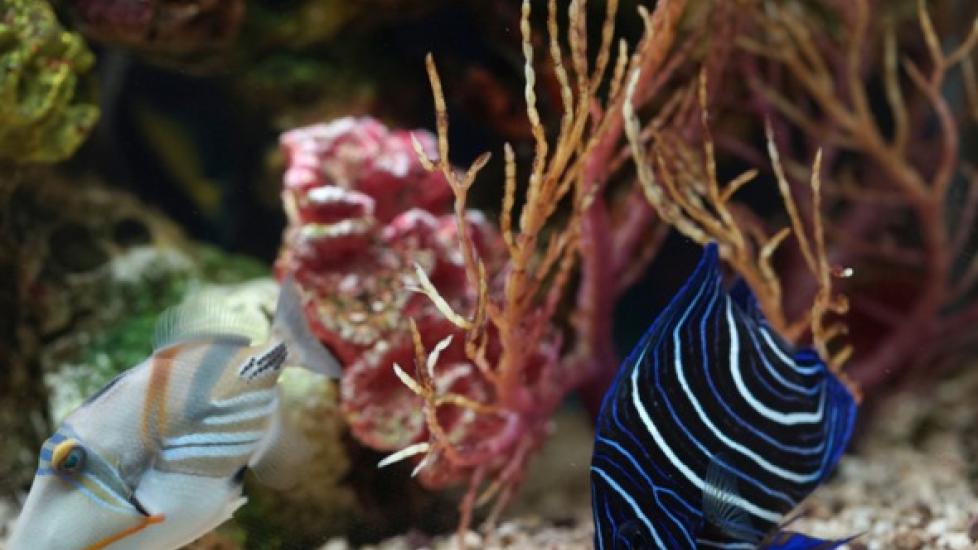How to Control and Remove Phosphates in Your Aquarium
The emergence of nuisance algae in an apparently "clean" tank can be as perplexing as it can frustrating, especially for those who are still learning about nutrient cycles.
Though they may be invisible, dissolved nutrients may accumulate over time, resulting in excessive aquarium algae. Without some effort to remove and control these fertilizers, algal plagues will become the norm.
One of the main nutrients to be concerned about here is dissolved phosphorus.
The Phosphorus Cycle
Phosphate is not present in the Earth's atmosphere in any significant quantity. Therefore, the oceans take in very little phosphorus from air-water exchange. Instead, phosphorus is carried to sea by way of rivers from terrestrial sources.
Phosphorus is thus more concentrated in coastal than in open ocean environments. In water, it may take the form of particulate organic phosphorus (such as that found in detritus), dissolved organic phosphate (such as that found in some fats and proteins) or dissolved inorganic phosphorus (such as phosphate).
As a vital component of every cell in every organism, phosphorus cycling plays a major role in shaping marine food webs.
Phosphorus primarily enters marine ecosystems through the uptake of phosphate by primary producers (mostly phytoplankton). The main pathway in the cycle (known as the "biological pump") takes phosphorus locked up in biomass in the form of carcasses, feces and so on to the seafloor, where it becomes part of the detritus.
Detritivores consume and metabolize the material, releasing phosphate into the surrounding waters. Wave action and oceanic water currents return this inorganic phosphorus to the surface, where it can again be utilized by algae and other autotrophs.
Controlling Phosphates in a Fish Aquarium
The primary input of phosphorus into aquaria is from fish food and unfiltered tap water, whereas the primary output is through water changes, uptake by macroalgae (i.e., seaweeds) and the use of absorptive chemical filter media.
Though it is essential for all forms of life, phosphate is required in rather small quantities. This poses a distinct problem in recirculating aquarium systems, specifically because the rate of input can greatly exceed the sequestration/export rate.
This means that phosphate levels can climb well above those found in the natural environment. So, how much is just enough?
Coral reefs are characteristically oligotrophic (nutrient-poor) environments. Thus, healthy and naturalistic reef aquaria should carry rather infertile waters. Phosphate levels must be monitored regularly using a reliable aquarium water testing kit, such as the API phosphate aquarium test kit.
For tanks housing corals and other reef animals, phosphate concentrations below 0.02 parts per million (ppm) are recommended. Problems, especially with runaway algal growth, usually can be observed as concentrations exceed one or two ppm.
Yet, some poorly maintained systems can reach levels as high as 5.0 ppm or more. It's no wonder some "reef" tanks turn into lush pastures of hair or film algae.
How to Remove Phosphate
These days, saltwater aquarium keepers are much more aware of the connection between nutrient management and the health of their captive ecosystems. Some, using advanced methodologies and the latest filtration devices/chemicals, are able to maintain very low phosphate levels.
Even so, phosphate rarely (if ever) needs to be directly added to a reef tank. In truth, most aquarium systems are quite full of phosphate. To avoid algal blooms, among other issues, phosphate removal is key.
The surest way to remove phosphates (assuming purified freshwater is used to make the new saltwater) is old-fashioned aquarium water changes. In fact, even if you have installed the very best aquarium filtration equipment, at least some regular water exchange is necessary.
The most efficient way to get rid of phosphate is to "vacuum" the substrate (as with a Fluval Edge gravel cleaner). This removes more detritus, which helps to prevent the stockpiling of phosphorus via settled particulate organic matter.
A planted refugium is a natural (and increasingly popular) way to control nutrients, including phosphate. In theory, the seaweeds take up phosphate as they grow; nutrients are exported as portions of the standing crop are harvested and discarded.
Because detritivorous microcrustaceans, such as copepods, heavily populate refugia, this method additionally helps to release phosphorus from detritus into phosphate.
Certain chemical filtrants absorb and hold onto phosphate. Both ferric iron granules and aluminum oxide beads (such as Seachem PhosGuard phosphate and silicate remover in marine and freshwater aquariums) can be used effectively for this purpose.
While ferric iron is an especially strong phosphate scavenger, it is prone to compaction/clumping. So when implemented, it must be used in a specialized media reactor.
Aluminum oxide, on the other hand, does not clump and can simply be held in a mesh bag and tossed into an overflow box or sump for easy servicing.
A chemical filter pad, such as the Deep Blue phosphate reducer pad, can give you even more control over phosphorus loads by removing particulate matter as well as by absorbing phosphate.
Phosphates and a Healthy Aquarium
Just as in the wild, nutrient-cycling plays a huge role in the healthiness of your captive ecosystem.
In typical aquarium systems, nutrients can build up rapidly. Keeping fish-stocking densities low, not overfeeding and performing frequent water changes can go a long way in controlling nutrients such as phosphate.
However, since some phosphate is bound to make its way into your aquarium waters, it's helpful to monitor concentrations regularly and use a few tools (e.g., chemical filtration) to keep it in check.
By paying a little attention to the phosphorus cycle, you can significantly improve coral condition while suppressing the growth of unwanted algae.
By: Kenneth Wingerter
Featured Image: iStock.com/Kameleon007
